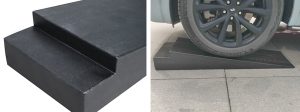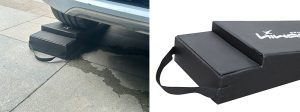In the world of transportation and logistics, efficiency is everything. One small improvement can make a huge difference in loading and unloading times, safety, and overall operational workflow. That’s where customizable trailer step ramps come into play. By adapting ramps to specific trailers, vehicles, and loads, businesses can optimize efficiency while maintaining safety and durability.
Why Loading Efficiency Matters
Time is money, especially in industries like logistics, construction, and agriculture. Every minute spent maneuvering heavy equipment or awkward loads can add up. Traditional, one-size-fits-all ramps often fall short: they may not match the trailer’s height perfectly, be too heavy to deploy easily, or lack the durability needed for repeated use. These inefficiencies can slow down operations and even pose safety hazards.
The Advantages of Customizable Step Ramps
-
- Tailored Fit
Customizable ramps are designed to match the exact height, width, and load capacity requirements of your trailer. This precise fit reduces the risk of misalignment, preventing accidents and equipment damage.
-
- Adjustable Load Handling
Whether you’re moving motorcycles, lawn equipment, ATVs, or heavy machinery, adjustable ramps can be modified to accommodate various load types. This flexibility ensures smooth transitions between different vehicles and cargo types.
-
- Material Durability
Custom ramps often use high-strength aluminum or steel alloys, providing longevity even under heavy use. Some designs also incorporate anti-slip surfaces for added safety during wet or uneven conditions.
-
- Enhanced Mobility and Storage
Many customizable step ramps are foldable or telescopic, making them easy to store and transport. This convenience reduces setup time and keeps the worksite organized.

Practical Applications
- Construction Sites: Moving small vehicles, wheelbarrows, and materials quickly on and off trailers.
- Agriculture: Loading tractors, ATVs, or harvest equipment efficiently.
- Recreational Vehicles: Transporting motorcycles, ATVs, or snowmobiles safely and quickly.
- Logistics and Delivery: Fast loading and unloading of goods in warehouses or delivery vehicles.
Tips for Selecting the Right Custom Ramp
- Know Your Load Capacity: Ensure the ramp supports the heaviest item you plan to load.
- Check Dimensions: Match the ramp width and length to your trailer’s specifications.
- Consider Material: Aluminum ramps are lightweight, while steel ramps offer maximum strength.
- Look for Adjustable Features: Telescopic or foldable ramps provide versatility for multiple uses.
- Prioritize Safety: Anti-slip surfaces and secure locking mechanisms are essential.
Customizable trailer step ramps are more than just accessories—they’re a productivity booster. By choosing ramps that fit your exact needs, you can enhance loading efficiency, improve safety, and extend the lifespan of both your trailer and your equipment. Investing in the right step ramp is a small change with a significant impact on daily operations.




